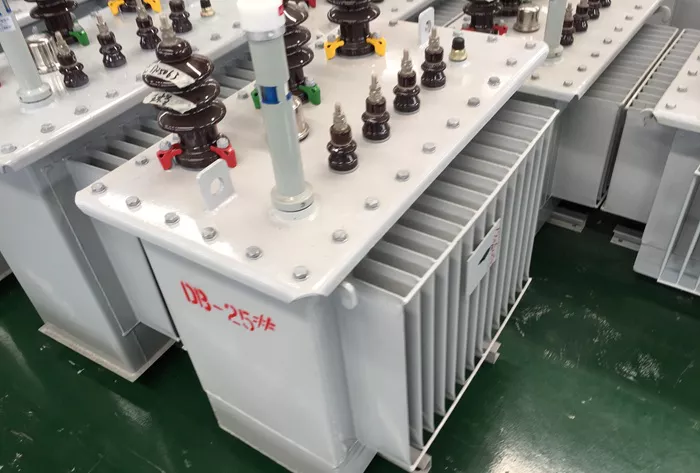Distribution transformers play a crucial role in electrical power systems, ensuring that electricity is delivered efficiently and safely to end users. These transformers are essential components in the power distribution network, stepping down voltage levels to usable values for residential, commercial, and industrial applications. This article provides a detailed yet easy-to-understand explanation of distribution transformers, their types, functions, and key features.
What Is a Distribution Transformer
A distribution transformer is a static electrical device that reduces high-voltage electricity from transmission lines to lower voltages suitable for consumer use. These transformers typically operate at lower power levels compared to transmission transformers and are designed for continuous service with high efficiency.
Distribution transformers are commonly found on utility poles, pad-mounted enclosures, or underground installations. They serve as the final link in the electricity supply chain, ensuring that homes and businesses receive power at safe and usable voltage levels, such as 120/240V in residential areas or 480V in industrial settings.
Key Functions of Distribution Transformers
Voltage Step-Down
The primary function of a distribution transformer is to reduce high primary voltages (typically 11kV, 33kV, or 66kV) to secondary voltages (such as 400V or 230V) that are safe for end users. This step-down process ensures that electrical appliances and machinery operate without risk of damage from excessive voltage.
Isolation and Safety
Distribution transformers provide galvanic isolation between the high-voltage grid and consumer circuits, enhancing safety by preventing direct electrical contact with high-voltage lines. This isolation also helps in reducing electrical noise and transient surges that could affect sensitive equipment.
Load Distribution
These transformers distribute electrical power evenly across multiple consumers, balancing the load to prevent overloading and ensuring stable voltage regulation. Proper load distribution minimizes energy losses and improves the overall efficiency of the power system.
Types of Distribution Transformers
Distribution transformers can be classified based on various factors, including construction, cooling methods, and application environments. Below are the most common types:
Pole-Mounted Transformers
Pole-mounted transformers are installed on utility poles and are commonly used in rural and suburban areas. They are compact, cost-effective, and easy to maintain. These transformers typically handle lower power ratings, making them ideal for residential power distribution.
Pad-Mounted Transformers
Pad-mounted transformers are ground-level units enclosed in protective metal cabinets. They are widely used in urban areas where underground power distribution is preferred. These transformers are safer for public spaces and are designed to prevent unauthorized access.
Underground Distribution Transformers
These transformers are specifically designed for subterranean installation, often in densely populated cities where overhead lines are impractical. They are built with robust insulation and waterproofing to withstand harsh underground conditions.
Single-Phase and Three-Phase Transformers
Single-phase transformers are typically used in residential areas where power demands are lower. Three-phase transformers, on the other hand, are employed in industrial and commercial settings where higher power capacity is required.
Oil-Immersed and Dry-Type Transformers
Oil-immersed transformers use insulating oil for cooling and are commonly used in outdoor installations. Dry-type transformers, which rely on air or resin for cooling, are preferred in indoor applications due to their fire-resistant properties.
Construction and Working Principle
Core and Windings
Distribution transformers consist of a laminated steel core and primary and secondary windings. The core minimizes energy losses, while the windings facilitate voltage transformation through electromagnetic induction.
Cooling Mechanisms
Efficient cooling is essential for transformer longevity. Oil-immersed transformers dissipate heat through natural or forced oil circulation, while dry-type transformers use air or epoxy resin for cooling.
Insulation Systems
High-quality insulation materials, such as paper, pressboard, or synthetic resins, are used to prevent electrical breakdown and ensure safe operation under varying load conditions.
Efficiency and Losses in Distribution Transformers
No-Load and Load Losses
Transformers experience core (no-load) losses due to hysteresis and eddy currents, while copper (load) losses occur due to winding resistance. Modern distribution transformers are designed to minimize these losses for better energy efficiency.
Energy Efficiency Standards
Regulatory bodies enforce efficiency standards (such as DOE in the U.S. or IE codes in the EU) to ensure that distribution transformers meet minimum performance criteria, reducing energy wastage and operational costs.
Applications of Distribution Transformers
Residential Power Supply
Distribution transformers ensure households receive stable and safe voltage levels for daily appliances, lighting, and electronics.
Commercial and Industrial Use
In commercial buildings and factories, these transformers support heavy machinery, HVAC systems, and large-scale electrical loads.
Renewable Energy Integration
With the rise of solar and wind power, distribution transformers play a key role in integrating renewable energy into the grid by stepping up or down generated voltages for efficient transmission and consumption.
Maintenance and Lifespan
Routine Inspections
Regular checks for oil leaks, winding integrity, and cooling efficiency help prolong transformer life and prevent unexpected failures.
Common Failure Causes
Overloading, moisture ingress, and insulation degradation are primary causes of transformer failures. Proper maintenance and load management mitigate these risks.
Expected Lifespan
A well-maintained distribution transformer can last 25 to 40 years, depending on operating conditions and environmental factors.
Conclusion
Distribution transformers are indispensable in modern power systems, ensuring efficient and safe electricity delivery to end users. Understanding their types, functions, and maintenance requirements helps in optimizing their performance and longevity. As power grids evolve with renewable energy and smart technologies, distribution transformers will continue to play a vital role in energy distribution.
By selecting the right type of transformer and adhering to best maintenance practices, utilities and industries can achieve reliable and cost-effective power distribution for years to come.
Related Topics:

